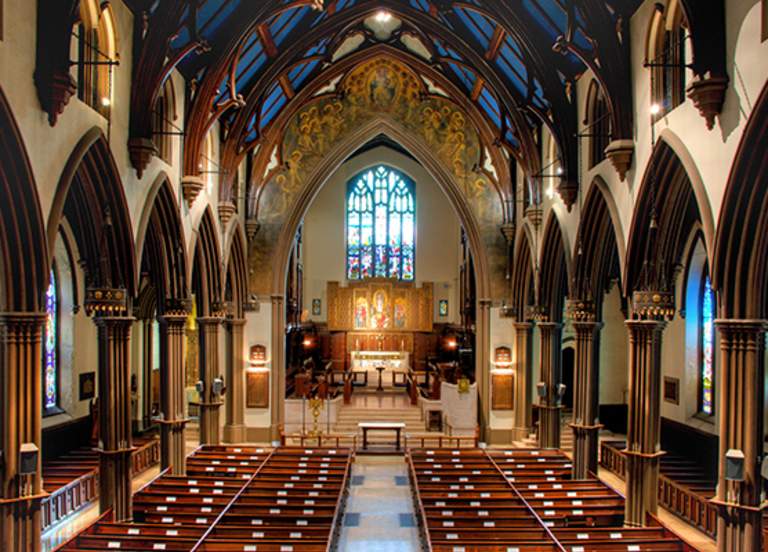
In 1789, as the United States emerged from revolution, a new religious identity took shape: the Episcopal Church. Born from the ashes of British Anglicanism, it became a bridge between tradition and the American experiment. Fast-forward to 2012, when two Massachusetts congregations—Calvary Episcopal Church in Danvers and St. Paul’s Episcopal Church in Peabody—merged to avoid closure, embodying the church’s 235-year legacy of adaptation. This is their shared story: one of crisis, reinvention, and unwavering community.
Colonial Beginnings: Anglicanism in the New World
A Church Divided by Revolution
The Church of England arrived with Jamestown’s settlers in 1607, but the American Revolution fractured its identity. Loyalist clergy fled, and patriots distrusted ties to the Crown. In 1789, Samuel Seabury, the first American Episcopal bishop, secured apostolic succession through Scottish bishops, ensuring legitimacy without British oversight.
The Book of Common Prayer: A Unifying Force
The 1789 Book of Common Prayer became the church’s cornerstone, blending Anglican liturgy with democratic ideals. Its language—”a republic of worship”—mirrored the new nation’s ethos. By 1820, Episcopal churches dotted the Eastern Seaboard, attracting elites like George Washington and James Madison.
Key Moment: The 1830s Oxford Movement rekindled Catholic rituals, sparking debates that still echo in today’s “High Church” vs. “Low Church” tensions.
Trials of the 20th Century: Decline and Division
The Membership Crisis
Mid-20th-century social upheaval hit hard. Between 1965 and 2000, Episcopal membership halved, from 3.4 million to 1.7 million. Urbanization, secularism, and competition from evangelical churches eroded traditional bases.
Civil Rights and Social Justice
The church’s progressive streak emerged in the 1950s. Bishop Jonathan Daniels, martyred in 1965 while registering Black voters in Alabama, became a civil rights icon. In 1976, the church approved women’s ordination—a first among Anglican branches—though dissenters splintered into breakaway groups.
By the Numbers:
- 2003: Gene Robinson’s consecration as the first openly gay bishop ignited global Anglican turmoil.
- 2015: The church voted to allow same-sex marriages, losing 7% of congregations but gaining new LGBTQ+ allies.
The Danvers-Peabody Merger: A Case Study in Survival
A Perfect Storm of Challenges
By 2012, Calvary Episcopal and St. Paul’s Episcopal faced existential threats. Calvary’s $200,000 annual budget couldn’t offset its deficit, while St. Paul’s crumbling 1913 building devoured funds. Congregations aged, youth vanished, and funerals outnumbered baptisms.
Unity Over Tradition
The merger, brokered by the Episcopal Diocese of Massachusetts, pooled resources and dissolved rivalry. Shared summer services tested compatibility, revealing surprising harmony. “We realized our faith wasn’t about buildings,” said Calvary’s Dick Healy. The new parish adopted a hybrid identity, temporarily worshipping at Calvary’s site while deciding St. Paul’s fate.
Leadership and Letting Go
Rectors Joyce Caggiano (St. Paul’s) and Thea Keith-Lucas (Calvary) stepped down to allow fresh leadership. “Growth requires sacrifice,” Keith-Lucas noted. Their departure symbolized the church’s broader shift—from clerical authority to communal stewardship.
Modern Episcopal Identity: Innovation Amid Tradition
Worship in the Digital Age
The COVID-19 pandemic accelerated change. Livestreamed services, once rare, became staples. The Diocese of Texas reported a 40% increase in virtual attendance post-2020, attracting global viewers.
Social Justice as Ministry
Episcopal churches now prioritize outreach over upkeep. Food pantries, climate activism, and immigrant aid programs—like St. Paul’s pre-merger ESL classes—redefine “parish work.”
Example: The Diocese of Maryland funds urban farms in Baltimore, merging eco-justice with community building.
The Future: Lessons from the Past
Embracing Smallness
The Danvers-Peabody merger reflects a national trend. Over 200 Episcopal churches have merged since 2010, trading grandeur for sustainability. “We’re leaner, but more focused,” says Rev. Sarah Krom of a merged Ohio parish.
Youth and Inclusivity
To attract millennials, churches blend ancient rites with modern relevance. Compline services by candlelight, LGBTQ+ affinity groups, and theology pubs (beer + Bible study) draw curious newcomers.
Stat: 58% of Episcopalians now support same-sex marriage, versus 31% in 2003 (Pew Research).
A Church Reborn
The Episcopal Church’s history is not of decline, but metamorphosis. From colonial schisms to Danvers-Peabody’s merger, it has turned crisis into reinvention. As theologian Diana Butler Bass observes, “This isn’t your grandmother’s church—it’s a living conversation.”
Final Thought: In letting go of the past, the Episcopal Church found its future: not in pews or steeples, but in the people it serves.
